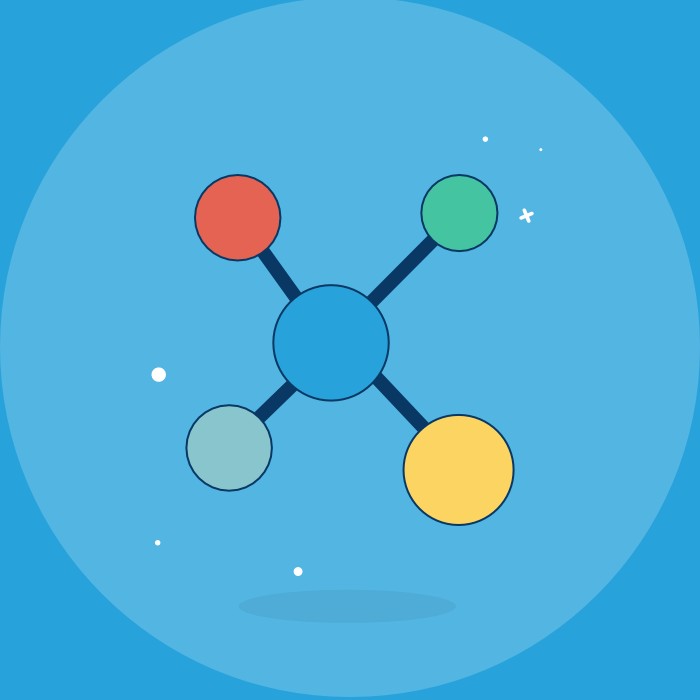An omnichannel transformation is the only way for a company to address rising complexity, provide an excellent customer experience, and manage operations costs.
We are all becoming digital fanatics – we live and breathe the digital experience in everything we do. Even in turbulent times, like the ones we are in right now, staying connected with the outside world and knowing the situation of our friends, families, and colleagues becomes more critical.
Brands and businesses and their operations are closed shut. It has made purchasing difficult. But even if shops, malls, or restaurants were open, we wouldn’t go out to buy anything.
People have shifted to online buying for food, clothes, groceries, and other daily needs. Even doctor’s appointments are being taken online.
More or less, we can say that there is nothing that we can’t do online. Even face-to-face interactions are possible through advanced virtual communication tools. We can access information worldwide by typing in a word, browsing search engines, and getting results.
It’s not laptops or computers; you can grab a phone and do the same. Most people prefer mobile phones or tablets to do stuff online Simply because they are more handy and convenient.
But it doesn’t end here. Humans are social beings. We need more than one way to connect with people during social distancing. Through technological advancements, social media platforms like Facebook, Twitter, and Instagram, have made it convenient to communicate with people in a click of a second.
Despite the diversity in technology, many businesses find it difficult to deliver good customer service when their customers are online and not in stores.
1. Importance of Customer Experience
Customer experience is subjective, and it is not as simple to understand the breaking numbers of satisfied vs. unsatisfied customers. Many customers leave brands and move to competitors after one bad experience.
It's no brainer to say that Organizations that do not pay attention to customer experience are likely to lose more customers than their competitors who do. Delivering an excellent customer experience is an essential task that leads to success and growth in the business.
A superlative customer strategy is one of the most important things a business should focus on. If you want to create an enhanced omnichannel customer experience, you are at the right place. But before that, no what is omni channel, and how is it different from a multi-channel?
2. Omnichannel and Multichannel are NOT the same
Most of us get confused between multichannel and omnichannel. A multichannel service would be customers interacting via phones, emails, or text messages but not through social media. Also, the customer service team in a multichannel approach is in siloes, and every agent handles a particular channel of communication/level of interactions.
Even if an agent is cross-trained, to know the complete customer history, actual usage, and value proposition, they have to go through multiple tools and processes to get the information. This strategy is inefficient at best and worst, leaving the customer stuck in the queue for too long, being transferred between departments, and often without any real answers.
On the other hand, an Omni channel experience allows the agents and customers to interact with each other on different platforms from the same place.
To understand better, some customer experience tools come with a unified dashboard. This dashboard keeps track of all the customer agent interactions that have happened across all media.
Here are the ways how you can deliver an enhanced omnichannel digital customer experience:
3. Get Honest Feedback
Ask customers what worked for them and what did not. Getting honest customer feedback is vital to know the pain areas in your current CX process. There are customer experience tools that help you draft appropriate questionnaires according to the situation. You can create multiple templates or pick one from the library of templates. Once data is collected, work on the opportunity to improve CX. It is also a great chance to build an SMS marketing campaign or email marketing strategies that address customers' needs.
4. Train your Team
Your team becomes more productive, proficient, and professional with adequate training. For the right training, arm your team with the best tools and practices. Then ask the team to deliver the best customer experience and integrate all the learning in making customers happy. Such training not only suffices CX. But it improves EX as well.
5. Think like the Customer
Put yourself in the customer’s shoes and think inside out. As if you are the customer, what kind of experience would you want? Direct connect? Hold in the call queue? Self-explanatory? Feel what a customer would feel in a typical situation. Try to hear the voice of the customer to collect critical insights. Make a note of everything and refine the process accordingly.
6. An Undisrupted Approach
Think of creating a seamless customer experience when the customer calls for the first time. Make sure communication is accessible across all channels. A customer should be able to connect to customer service through chats, emails, and social channels. Also, work on creating a cross-channel platform. So when customers connect to a chatbot, they should be sent to a human without disturbance. Customers should be able to communicate through mobile devices as well as desktops.
Circulate information across all channels of communication. Integrate a knowledge base software to your existing customer service tools like chatbots and live chat.
Furthermore, ensure you create a consistent and meaningful message across all web pages and platforms. Customer experience should be the same regardless of whether customers buy online, at the store, or through referral channels.
8. Break Silos
Maintaining customer expectations and improving customer experience is not the job of customer experience professionals alone. Different teams across departments must unite to form a process unanimously and do their part. The top-level management team should also contribute to and support the team in the best way possible.
9. Set up a Centralized System
To maintain a real omnichannel experience, storing customer data in one place is imperative. A CRM or an ERP collects customer data across channels and creates customer-centric data in one platform. The ability to map data and use it internally will significantly impact how to provide an exceptional omnichannel experience.
10. Apply Analytics
Apply analytics to the entire dataset to come up with a conclusion. Analyzing data helps understand the customer journey and highlights positive or negative outcomes. Moreover, if CX improves at the beginning of the customer journey, it stops the customer from being negative and going elsewhere.
Conclusion
Companies must work on delivering an omnichannel experience. Customers want to communicate with brands as they interact with friends and families – secure and flexible on every channel. No customer likes to hold or pass over or get frustrated.
Brands that maintain consistent customer experience across the customer journey have a strong customer base, fewer attrition rates, happy employees, and increased profits. Omnichannel is the only way out for better brand building and keeping the customers happy in the long run.
Subscribe to weekly updates
You’ll also receive some of our best posts today






